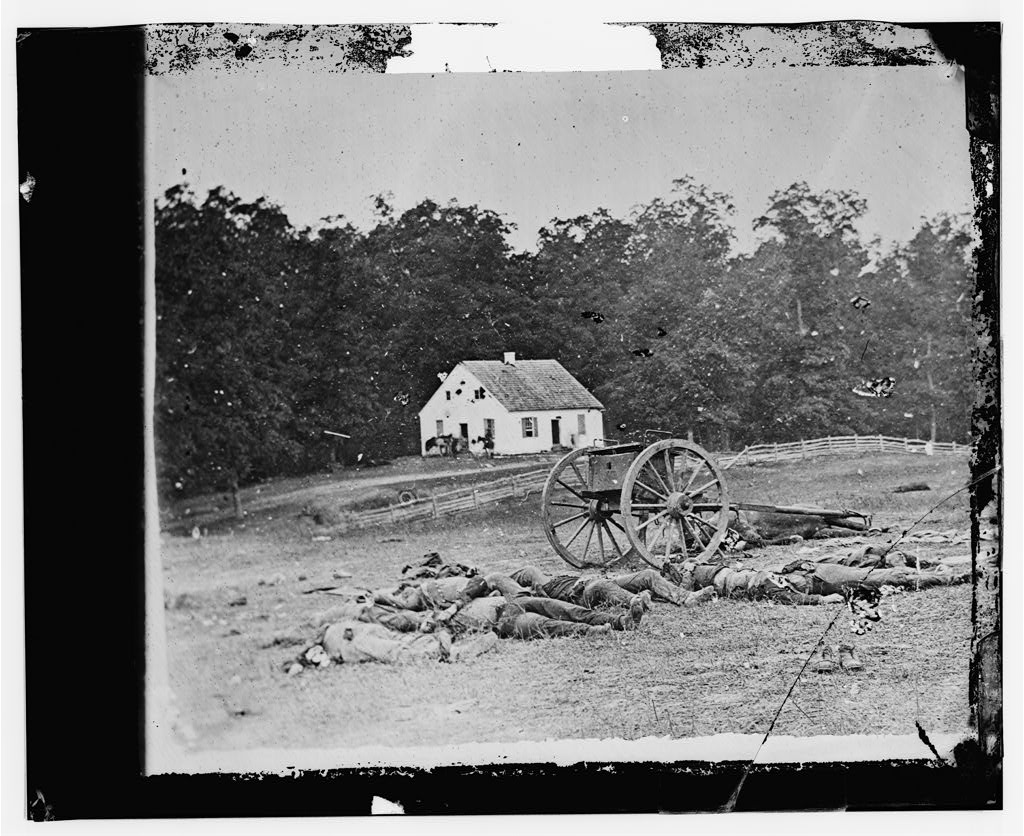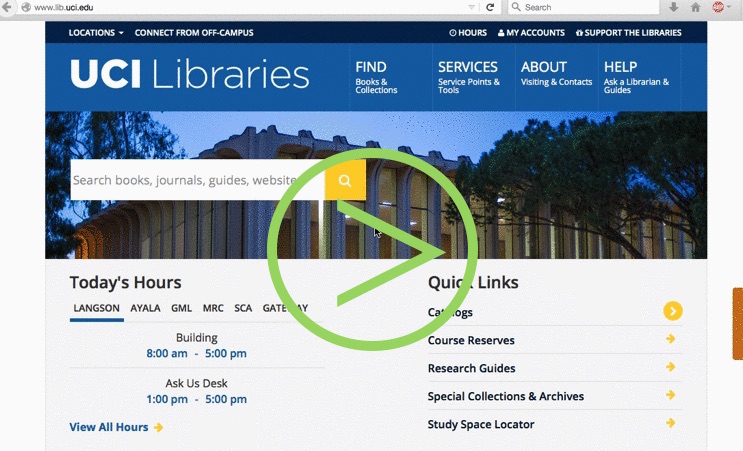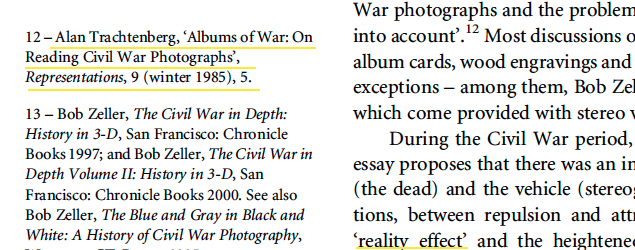Essay Assignment 3: Historical Analysis
The Research and Writing Process
You can begin your writing and research process in one of two ways: by locating either an image or a topic that interests you. Here we will begin with an image; but, your process could just as well begin with the exploration of secondary sources. In the end, both approaches require interaction between your secondary and primary sources. The more you learn about your topic, the better you will be able to interpret your image.
Finding an Image
Start your search by browsing the HCC Image Gallery. Notice that when you click on an image, the source material for the image appears, often with a link to the digital collection that houses your image. Extend your search by exploring this digital collection so that you find an image that most interests you. You might peruse digital collections at The Library of Congress (Civil War Prints and Photographs Collection), Smithsonian American Art Museum (The Civil War and American Art), Harper’s Weekly (UCI-accessable archives), etc., which are linked to the images in the HCC Image Gallery; or you might discover new digital collections through your search.
Once you have selected an image that interests you, make a note of its bibliographic information. You will find that reliable electronic archives offer you the information you need to cite the source. Imagine that you have chosen the following photograph:

Gardner, Alexander. Antietam, Maryland. Bodies in front of the Dunker Church.
Sept. 1862. Photograph. Lib. of Cong., Washington D.C. Web. 5 Jan. 2015.
You see from the citation that this photograph represents the aftermath of the Battle of Antietam. Take a moment to write down your first impressions. What do you notice first? The pile of bodies? The cannon? The church (the title of the image tells me this is a church, as opposed to a farmhouse)? The fence cutting through the landscape? What details do you notice about these objects? How are these objects organized in the space of the picture? Review your Writer’s Handbook chapter “Analyzing Visual Images” for additional suggestions on the methods of image analysis, apply some of these approaches to your selected image, and save your notes as you proceed.
Finding Secondary Sources
Prior to searching for secondary scholarly sources, including peer-reviewed journal articles, it is important to do some “pre-search” in order to become more familiar with the object that you intend to analyze. For example, when beginning to compile information about Gardner’s Antietam, Maryland. Bodies in front of the Dunker Church, it is perfectly acceptable to select terms that interest you and then perform a Google search using those terms. For instance, you may search Google using the terms, “Antietam,” “Dunker Church,” and/or “Alexander Gardner.”
Once you have retrieved search results with your keywords, you can begin to learn more about the historical context that situates the photographer and the image. For example, you might learn that Gardner served as a staff photographer for the Army of the Potomac while photographing the Battle of Antietam; that Gardner sometimes manipulated the scenes in his photographs to place bodies in more dramatic positions; that the corpses in the image are those of both Union and Confederate soldiers; and that this particular photograph was exhibited alongside others in a New York gallery the month following the battle.
Be sure to evaluate whether or not the source that provides you with new information is credible, and be able to identify the factors that contribute to the source’s authority. Part of what is involved in research is your ability to evaluate information and information resources so that you can develop your own point of view and reflect carefully and critically on a topic. A Google search can help raise interesting questions and offer you a set of search terms. It can also, possibly, direct you to credible secondary sources that satisfy the requirements of an academic essay. But often it does not, serving only as a starting point to your research process.
Once you have completed your Google “pre-search,” you can begin to use the search terms and topics that most interest you to find a scholarly peer-reviewed journal article that will contribute to your analysis of your chosen civil war image. In order to do this, you need to enter an appropriate database. (Use a VPN connection to gain access to these library resources when off-campus.)
To access databases that are most relevant to Humanities Core, please consult the Humanities Core LibGuide: http://guides.lib.uci.edu/humcore. Once you have made it to the guide’s landing page, select the “Databases and Electronic Resources” tab. On this page, you will find several databases that you can use to find a scholarly peer-reviewed journal article.
While there are many databases from which to choose, it may be best to begin your search using Academic Search Complete. Because it is an EBSCO hosted database, you can include other databases in your search from ASC. To do this, select the “Choose Databases” link located above the search bar.
We recommend that you include the following databases: America History and Life, Historical Abstracts, Military and Government Collection, Art Source, and Index to 19th-Century American Art Periodicals.

How to access an article database -- Click to start or stop the animation
You can also deselect the “Full Text” option in the left hand toolbar, which will let articles from JSTOR and Project Muse enter into your search results. To retrieve these articles, as well as other articles to which ASC does not provide full text, select the “UC E-Links” option in the article’s record to learn how to access the article. If the article is not available electronically, the UC E-Links page will provide you with the option to search for the actual journal in ANTPAC or to request the article using Inter-Library Loan.
Finally, you can use truncation to create more efficient searches. Truncation allows you to search for all terms that have a common root. For example, since you may want to search for “photography” and you know that the term “photography” is also closely associated with terms such as “photographer,” “photograph,” “photographs” and others, you can enter “photo*”(adding the * symbol performs the truncation) and ASC will search for all terms that have that root. Keep in mind that “photo” is also the root of “photosynthesis” and other terms that may not be relevant to you. So make sure that you also include an important search term in each necessary search box to create some limits for your search.
For more information on how to use Academic Search Complete and any other Ebsco Host database, please consult the following tutorial: https://www.youtube.com/watch?v=Im52V1A8p04.
Selecting Secondary Sources
When selecting secondary sources that might pertain to your research interests, choose sources that in some way respond to your research questions. If your first impressions of the Gardner photograph prompted research questions about the pile of corpses in the foreground, you might read Emily Godbey’s “‘Terrible Fascination’: Civil War Stereographs of the Dead.” Why? Because an article centering on “stereographs of the dead” promises to address your interest in the photographic representation of death. As you read your secondary source, take notes on its content and on other relevant secondary sources it cites. You may discover a more useful source in the footnote of an article you are reading.

Take notes on article content and references
Now, returning to your original notes on the image, ask yourself: How does this scholarly article contextualize your understanding of the image? Does it complicate your understanding of the camera’s perspective? Of the audience for whom this image was taken? Of Gardner’s purposes in chronicling the battle? Your secondary source will not only answer some of your research questions; it will generate new ones.
The more secondary sources you read, the better you will understand your image. And the better you understand your image, the more refined your research questions become. There is no “right” way of starting this process. Though this prompt suggests starting with an image, you could just as well begin by reading secondary sources on a topic of interest (e.g., sketches of contrabands, images of hospitalized soldiers, depictions of African American women, cartoons caricaturing African American contrabands, images of Union officers, etc.), and those, in turn, might lead you to images that represent your topic of interest. Allow your curiosity to lead you.
